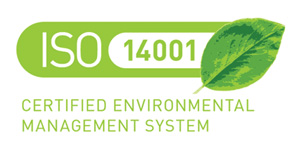CI Casting Of All Grades
Alloy Cast Iron
These grades are classified as either ductile or alloy cast iron. The ductile grades have spheroidal graphite and have reasonable strengths and ductility. The cast grades have flake graphite which results in a very brittle alloy but can offer good dampening and hardness properties.
| Alloy Properties | |
|---|---|
| Representative Alloys | Ductile and Gray |
| Applications | Gray Iron is low cost material with good wear, galling, and dampening properties. Ductile Iron is alow cost material with properties simliar to steels |
| Limitations | Both: Non-weldable, Gray is a brittle material |
| Typical Uses | Gray: cylinder liners, bearings Ductle: piping, automotive components |
| Machinability | Good |
| Weldability | Non-weldable |
| Corrosion Resistance | None |
SG Iron Casting
S G Iron is also known as Spheroidal Graphite Iron, Ductile Cast Iron, Nodular Cast Iron, Spherulitic Graphite Cast Iron. S G Iron is a type of cast iron that has been treated while molten with an element such as magnesium or cerium to induce the formation of free graphite as nodules or spherulites. This imparts a measurable degree of ductility (easily manipulated) to the cast metal. The ductile iron family offers the design engineer a unique combination of strength, wear resistance, fatigue resistance, and toughness, as well as excellent ductility characteristics.
S G Iron/Ductile iron is not a single material but is part of a group of materials which can be produced to have a wide range of properties through control of the microstructure. The common defining characteristic of this group of materials is the shape of the graphite. In ductile irons, the graphite is in the form of nodules rather than flakes as it is in grey iron. The sharp shape of the flakes of graphite create stress concentration points within the metal matrix and the rounded shape of the nodules less so, thus inhibiting the creation of cracks and providing the enhanced ductility that gives the alloy its name.
This nodular graphite structure inhibits the creation of linear cracks hence the ability to withstand distortion.
| Chemical Composition | |
|---|---|
| Carbon | 3.2% - 3.6% |
| Silicon | 2.2% - 2.8% |
| Manganese | 0.1% - 0.5% |
| Magnesium | 0.03% - 0.05% |
| Phosphorus | 0.005% - 0.04% |
| Sulfur | 0.005% - 0.02% |
| Copper | 0.4% |
| Iron | Balance |
Mild Steel Casting
Mild steel is also called as low carbon steel, whose carbon content is between 0.10% to 0.30%. Because of its low carbon content, so its tensile strength and hardness are lower, so called as mild steel.
Mild steel castings have good properties for various machining, forging and welding processes, so it is wildly used for engineering fields, such as shipbuilding industries.
Sunrise Ispat Udyog has produced many mild steel castings for the clients overseas. The large castings were about 300 kg per piece, and small castings were about several kilograms. All the castings were made by sand casting process.
The production for mild steel castings are not difficult, but the casting defects are also the problem, such as sand inclusion, air holes, cracks, shrinkages.
Stainless Steel Casting
We are offering our clients, Stainless Steel Castings. These are widely appreciated by our clients for their strength, durability and corrosion resistance. We can provide these in customized sizes and specifications in accordance with the requirements of our esteemed clients.
A casting made from stainless steel. Stainless steel is a steel alloy with a minimum of 10.5 or 11% chromium content by mass. Stainless steel does not stain, corrode, or rust as easily as ordinary steel (it stains less, but it is not stain-proof). There are different grades and surface finishes of stainless steel to suit the environment to which the material will be subjected in its lifetime.
Key Properties
These properties are specified for flat rolled product (plate, sheet and coil) in ASTM A240/A240M. Similar but not necessarily identical properties are specified for other products such as pipe and bar in their respective specifications.
| Chemical composition for grade 304 Stainless Steel | ||||||||||
|---|---|---|---|---|---|---|---|---|---|---|
| Grade | C | Mn | Si | P | S | Cr | Mo | Ni | N | |
| 304 | Min | - | - | - | - | - | 18.0 | - | 8.0 | - |
| Max | 0.08 | 2.0 | 0.75 | 0.045 | 0.030 | 20.0 | - | 10.5 | 0.10 | |
| 304L | Min | - | - | - | - | - | 18.0 | - | 8.0 | - |
| Max | 0.030 | 2.0 | 0.75 | 0.045 | 0.030 | 20.0 | - | 12.0 | 0.10 | |
| 304H | Min | 0.4 | - | - | - | - | 18.0 | - | 8.0 | - |
| Max | 0.10 | 2.0 | 0.75 | 0.045 | 0.030 | 20.0 | - | 10.0 | - | |
| Mechanical Properties of Grade 304 Stainless Steel | |||||
|---|---|---|---|---|---|
| Grade | Tensile Strength (MPa) min |
Yield Strength 0.2% Proof (MPa) min |
Elongation (% in 50mm) min |
Hardness | |
| Rockwell B (HR B) max | Brinell (HB) max | ||||
| 304 | 515 | 205 | 40 | 92 | 201 |
| 304L | 485 | 170 | 40 | 92 | 201 |
| 304H | 515 | 205 | 40 | 92 | 201 |
| Chemical composition for grade 316 Stainless Steel | ||||||||||
|---|---|---|---|---|---|---|---|---|---|---|
| Grade | C | Mn | Si | P | S | Cr | Mo | Ni | N | |
| 316 | Min | - | - | - | - | - | 16.0 | 2.0 | 10.0 | - |
| Max | 0.08 | 2.0 | 0.75 | 0.045 | 0.030 | 18.0 | 3.0 | 14.0 | 0.10 | |
| 316L | Min | - | - | - | - | - | 16.0 | 2.0 | 10.0 | - |
| Max | 0.030 | 2.0 | 0.75 | 0.045 | 0.030 | 18.0 | 3.0 | 14.0 | 0.10 | |
| 316H | Min | 0.4 | 0.4 | - | - | - | 16.0 | 2.0 | 10.0 | - |
| Max | 0.10 | 0.10 | 0.75 | 0.045 | 0.030 | 18.0 | 3.0 | 14.0 | - | |
| Mechanical Properties of Grade 316 Stainless Steel | |||||
|---|---|---|---|---|---|
| Grade | Tensile Strength (MPa) min |
Yield Strength 0.2% Proof (MPa) min |
Elong(% in 50mm) min |
Hardness | |
| Rockwell B (HR B) max | Brinell (HB) max | ||||
| 316 | 515 | 205 | 40 | 95 | 217 |
| 316L | 485 | 170 | 40 | 95 | 217 |
| 316H | 515 | 205 | 40 | 95 | 217 |




